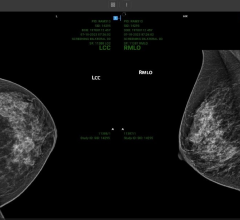The sale and use of CT scanners could ramp up this year, thanks at least in part to lung cancer screening. Low-dose computed tomography (CT) screening programs are popping up from coast to coast. The feds are picking up the tab for Medicare patients. And, while third-party payers have not been so forthcoming, the cost of a screening exam is within many peoples’ reach.
Columbia University Medical Center in Manhattan is charging $300; ditto for Seattle Cancer Care Alliance. St. Vincent Indianapolis Hospital will do one for $99; neighboring Franciscan St. Francis Health asks just $69 — and they’ll throw in a heart scan because “smoking also increases the risk of heart disease,” according to its website.
This could be a long-awaited spur to CT scanner sales. Screening symptom-free people requires minimal risk. And, while low-dose scanners have been around for a long time, they have not sold all that well.
Not since the mania of 2004 to 2006 have CT manufacturers enjoyed strong sales. Back then the introduction of 64-slice scanners drove the market. The low-dose systems that followed didn’t do much to move the needle. They were victims, along with much of the rest of the imaging marketplace, of draconian cuts in reimbursement and a global recession.
Now CT lung screening programs with their requirement for low-dose scanners amid an aging installed base may turn things around. It is not, however, a slam dunk.
The imaging community has gotten very good at stretching the life of CT scanners. Early in 2014, the consulting firm IMV Limited of Des Plaines, Ill., estimated the average age of operating CT scanners in the U.S at 8.9 years, about twice the lifespan of the early 2000s.
IMV reported that, although many imaging departments are poised to replace their older CT scanners, most imaging administrators are in a “watchful waiting” mode. The proportion of sites IMV surveyed regarding plans to buy CT scanners over the next three years that responded “yes” or “maybe” declined from 55 percent to 51 percent.
Half is still a big percentage, even if they are only watchfully waiting. And CT vendors would love to leverage the interest in lung screening to get potential buyers off the fence. An internal study by Siemens Healthcare estimates that more than 10 million men and women in the United States could be in line for CT lung cancer screening. But vendors will have to be careful in how they tap that.
Low-dose CT means exposing patients to an effective radiation dose per exam of less than 1.5 mSv. And, while many CTs now in product portfolios meet this requirement, it does not mean they can be sold specifically for use in a lung cancer screening program.
CT scanners currently are FDA cleared for diagnostic — not screening — purposes. Noting that, Siemens has submitted and is awaiting word on a 510(k) application for a low-dose protocol compatible with its CT scanners. The protocol will ensure low dose and image quality sufficient to spot lung cancer, according to the company.
Similarly, just wanting to offer CT lung screening will not be enough. Medicare coverage requires providers to have participated in past lung cancer screening trials, such as the National Lung Screening Trial, or be an accredited advanced diagnostic imaging center with training and experience in low-dose CT lung cancer screening.
The American College of Radiology (ACR) has launched a certification program specifically for this purpose. Applicants need the proper equipment, as well as an ACR-acceptable protocol for lung cancer screening.
And, just wanting to be screened is not enough. Medicare sets strict limits on whose screenings will be covered, criteria being broadly applied to other comers. Sites typically require those who will pay out-of-pocket for CT lung scans to be a current smoker or have smoked within the last 15 years; aged 55 to no more than 79; and have an average smoking history of one pack a day for 30 years or more.
Despite these restrictions, interest in the United States should be strong enough to cause many providers to put in the effort to offer bona fide lung cancer screening programs. Every year more people die of lung cancer than breast, prostate and colon cancers combined. If ever there was a need, this appears to be it.
And, if early adopters of lung screening can demonstrate improved outcome for lung cancer patients, third-party insurance coverage is almost sure to follow, energizing CT in a way not seen for nearly a decade.
Greg Freiherr has reported on developments in radiology since 1983. He runs the consulting service, The Freiherr Group. Read more of his views on his blog at www.itnonline.com.


 April 16, 2024
April 16, 2024 








